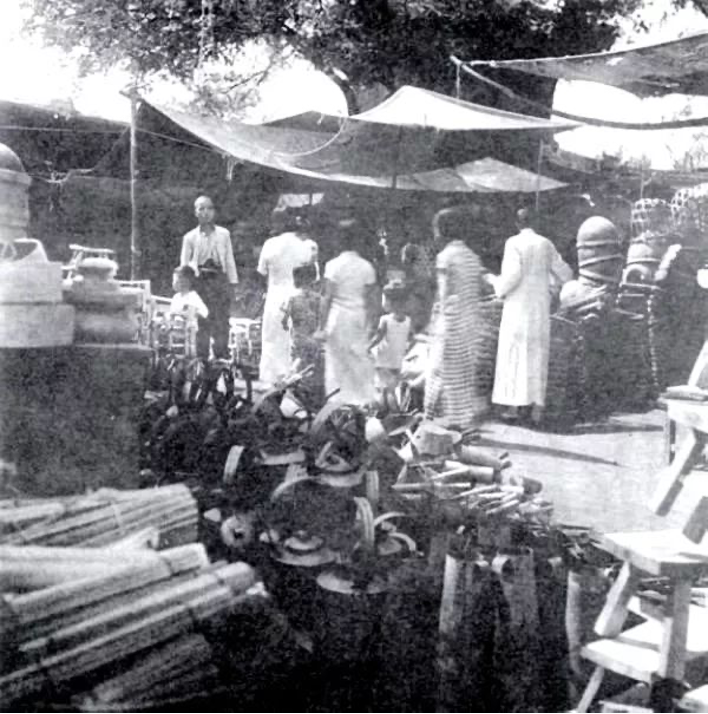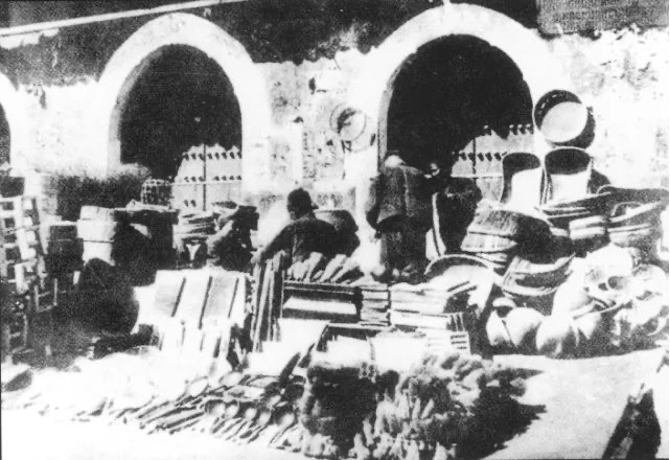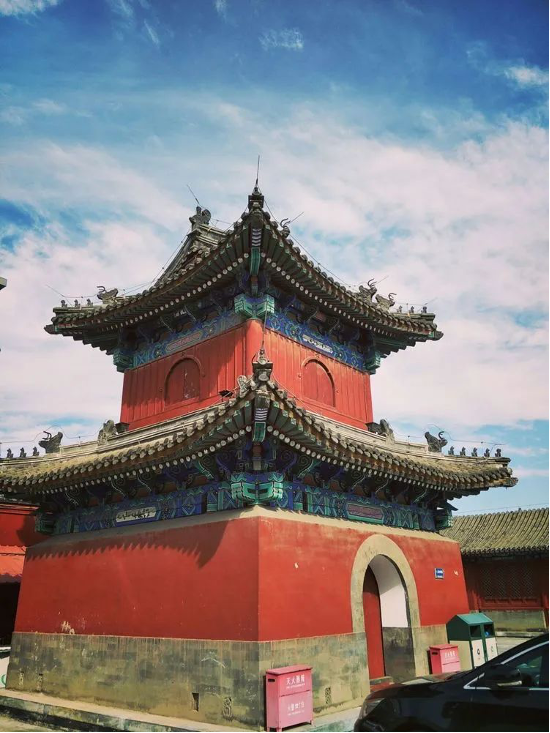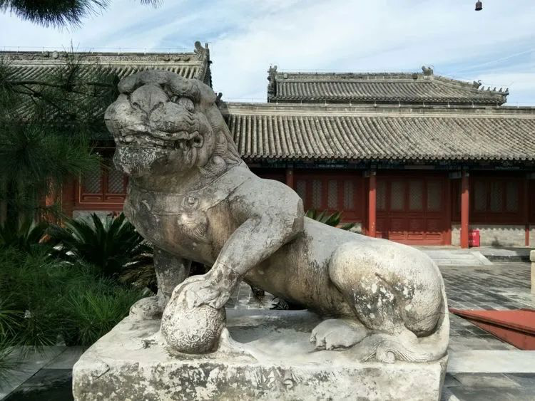About Baita Temple
The scientific name of Baita Temple is Miaoying Temple. It is located at No. 171 North Street, Fuchengmen Inner Street, Xicheng District, Beijing (No. 25, Old House). It is a Tibetan Gelugpa Buddhist monastery. The original name was "Dashengshou Wan'an Temple""(大圣寿万安寺). The Baita Temple built in the Yuan Dynasty in the temple is the earliest and largest bowl-covered pagoda in China.
▶ Records on renovating Baita Temple
From the large and small inscriptions left by the temple, we learned that the Baita Temple was repaired 8 times in the past dynasties, namely the fourth year of Yuanzhizheng (1344), the eighth year of Xuande in Ming Dynasty (1433), and the fifteenth year of Wanli (1587). , Qing Kangxi twenty-seven years (1688), Qianlong eighteen years (1753), Jiaqing twenty-one years (1816), the Republic of China fourteen years (1925) and the Republic of China twenty-six years (1937). Among them, in the eighteenth year of Qianlong's reign, there is a record in the "Inscription on the White Pagoda Rebuilt by the Imperial System": "In the eighteenth year of Qianlong in the Qing Dynasty, in the seventh month of Guiyouqiu, the White Pagoda of Miaoying Temple was rebuilt. One volume of the Prajnaparamita Heart sutra as well as all seven hundred and twenty-four volumes of the Sanskrit "Zunsheng Mantra"(尊胜咒) and the "Dazang Zhenjing" (大藏真经)are used as a town." For many years, people have been searching for these treasures, expecting a miracle to appear.
▶A surprising discovery during the overhaul of the White Pagoda
In 1976, due to the impact of the Tangshan earthquake, the top of the White Pagoda of Miaoying Temple tilted to the northeast, the upper masonry of the "Thirteen Heavens" supporting the canopy collapsed seriously, and the white ash layer of the tower body fell off in large areas.
Beginning in July 1978, the cultural relics department carried out comprehensive repairs to the White Pagoda. On October 2, many cultural relics such as scriptures and boxes were found on the top of the White Pagoda. It turned out that they were the town pagoda that was preserved in the gilded small area at the top of the White Pagoda when the White Pagoda was repaired in the eighteenth year of Emperor Qianlong of the Qing Dynasty (1753). Collection 724 Longzang new edition "Tripitaka"; one copy each of " Prajnaparamita Heart sutra" handwritten by Emperor Qianlong, and one copy of Tibetan "Zunsheng Mantra": three bronze statues of Buddha III, each 20 cm high: filled with eight treasures, rosary beads , Four silver bottles of currency of each dynasty and generation: a whole carved rosewood statue of Guanyin with niches, with a small round bowl below the statue, containing 33 relics: a finely carved small red gold relic Longevity Buddha, five centimetershigh in length, more than forty rubies inlaid on the whole body: a set of five-sided Buddha crowns and applique brocade cassocks, decorated with more than a thousand pearls, coral beads, sandalwood beads and blue and rubies: blue, yellow and green silk woven cloth, 5.3 meters long and 0.76 meters wide, is woven with "eight treasures" graphics and Tibetan characters. The large and small boxes are placed in the order of the three treasures of Buddha, Dharma and Sangha.
This batch of national treasure-level cultural relics is really dazzling and breathtaking!
Then, a manuscript signed by Luo Jun was found in a crack in the sky plate at the top of the tower. This manuscript recorded the fact that the Japanese army invaded China. Since the government of the Republic of China had repaired the White Pagoda in 1937, it can be concluded that this manuscript was placed on the top of the pagoda when it was repaired. The paper of the manuscript is yellowed due to its age, but the handwriting on it is clear and legible, and its content is: "This year's rebuilding of this pagoda coincides with the Sino-Japanese War.
(Lunar calendar) June 29th (August 5th), the Japanese army occupied Beijing. Since then, the war situation has spread all over the country. Aircraft and cannons have bombed everywhere, and life has been destroyed. The plan was successful, and within a few months, Japan occupied several provinces in North China.
At present, the war is still fierce. It is impossible to predict when the war will end. It is difficult to determine the rise and fall of the country. Climbing the ancient pagoda, recalling the past and remembering the present, I will give a few words to tell future generations as a permanent memorial.
On the third day of October in the twenty-sixth year of the Republic of China (November 5, 1937) Luo Jun. "The discovery of this cultural relic caused a great sensation in the academic circles at that time. The 26th year of the Republic of China was 1937, the June 29th of the lunar calendar was August 15th, and the third day of the October lunar month was November 13th.
While people are studying the contents of this letter, they are also investigating who this Mr. Luo Jun was. Due to the age, there was no way to verify it. We can only imagine that Mr. Luo may have been the manager of the renovation project at that time, but there is no way to confirm it. The thing is, he must be a Chinese who is full of love for the motherland. It was difficult to verify the circumstances under which Luo Jun wrote this manuscript, let alone whether this Mr. Luo survived eight years of slavery.
Seeking protection for the Baita Temple Sutra Turning Ceremony
On October 25 of the lunar calendar every year the anniversary of the White Pagoda in the Baita Temple is celebrated. On that day, the monks and laymen will hold the turning tower ceremony and worship activities.
The monks and laymen have to go up to the second floor of the pagoda and circle the pagoda clockwise from west to east to pray for blessings. The monks turn around the tower, and the worship ceremony will be held for three days.
The market was unstable in 1940 during the Japanese era. November 24 of that year coincided with October 25 of the lunar calendar. Under the auspices of the Mongolian abbot of the Baita Temple, there were 13 lamas at 9:00 in the morning. More than 10 laymen recited the scriptures in the hall until 16:00. They circled the pagoda for three weeks, read the scriptures while going around the White Pagoda, and the ceremony was completed at 17:00. Not far away, Guan Baishan and Su Junkui, the Inspectors of the 3rd Road, Section 11 of the Inner Fourth District Police Station, stayed there for a whole day with an uneasy mood. Because just a few days ago, the abbot of Baita Temple got a chair, Zhang Chubo, for today's turret activity, and he went to the police station and asked for police to be dispatched to maintain order. Now that the task has finally been completed, Inspectors Guan Baishan and Su Junkui can finally let go of their hanging hearts and go back to report to their superiors.
Unforgettable Baita Temple
The mountain gate of Baita Temple is three arched gates. The outside of the temple is very noisy, but the inside of the temple is very clean. Not many visitors.

Clock tower
This Baita Temple was first built in the Liao Dynasty, but was later destroyed by war. The White Pagoda was built in the Yuan Dynasty and has a history of more than 700 years. Don't underestimate these objects in the White Pagoda Temple, many of which have a history of hundreds of years.

A pair of stone lions in front of the hall are old objects of the Yuan Dynasty. I have always felt that the lion in China is not like a lion, because the lion after Ming and Qing dynasties has been gradually mythological. Yuan Dynasty stone lions carved out of the smell of real lions.
I asked him where these Buddha statues were collected from. He said that it was mainly from this Baita Temple, which turned out to be the Hall of Ten Thousand Buddhas.
You can find the Part 1 “ Collection of rare and old photos and introduction of Báitǎ temple” of this three part series here
The link to the original article can be accessed here
[Please note: If you are interested to reproduce our translation works, please let us know in advance. Contact us: thearanikoproject@gmail.com for inquiries]




























